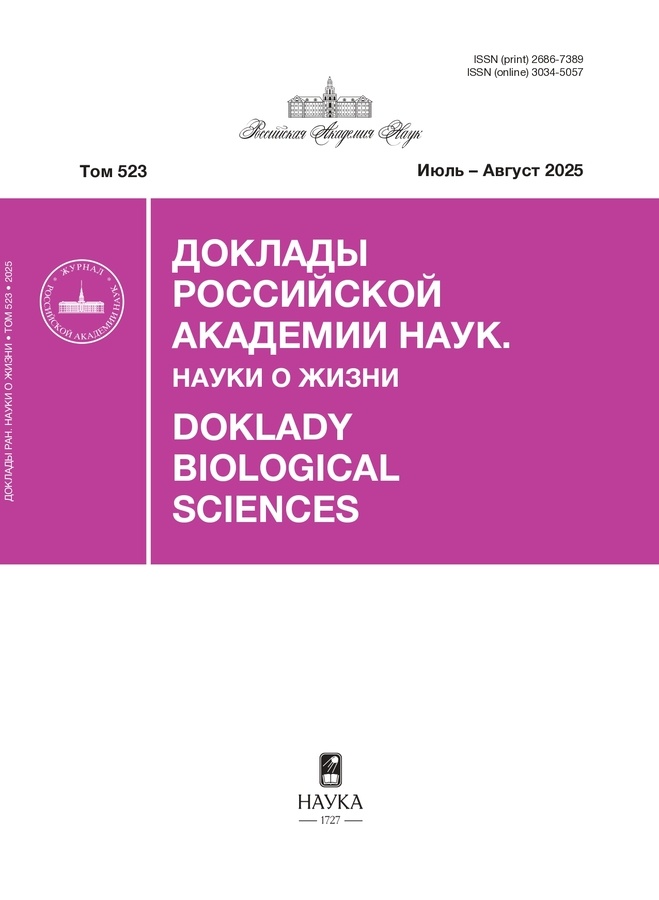Development of an anchor bispecific nanoantibody to improve the efficiency of antigen immobilization and detection in a well of a polystyrene plate
- Authors: Tillib S.V.1, Panasyuk M.V.1, Goryainova O.S.1, Ivanova T.I.1
-
Affiliations:
- Institute of Gene Biology, Russian Academy of Sciences
- Issue: Vol 521, No 1 (2025)
- Pages: 246-252
- Section: Articles
- URL: https://vestnik.nvsu.ru/2686-7389/article/view/684062
- DOI: https://doi.org/10.31857/S2686738925020148
- ID: 684062
Cite item
Abstract
Immunoassay (IA) methods performed in the wells of a polystyrene microplate are the basis of diagnostic studies. In the “sandwich” IA, a fundamentally important initial stage is the immobilization of anchor antibodies in the well of the plate, designed for specific binding of a given antigen from a biological fluid. One of the very promising options for antigen-recognizing molecules are single-domain antibodies (nanoantibodies, Nb). The use of Nbs as anchor antibodies is hampered by their low efficiency of functioning after passive adsorption in the well of the plate. The development of a new format and immobilization method in the case of NT are fundamentally important for overcoming this problem. This work describes the development of a new format of an anchor bispecific nanoantibody (anchor-Nb) to improve the efficiency of both passive adsorption of anchor--NT and subsequent stages of immobilization and detection of the target antigen in the well of a polystyrene plate.
Full Text
About the authors
S. V. Tillib
Institute of Gene Biology, Russian Academy of Sciences
Author for correspondence.
Email: sergei.tillib@gmail.com
Russian Federation, Moscow
M. V. Panasyuk
Institute of Gene Biology, Russian Academy of Sciences
Email: sergei.tillib@gmail.com
Russian Federation, Moscow
O. S. Goryainova
Institute of Gene Biology, Russian Academy of Sciences
Email: sergei.tillib@gmail.com
Russian Federation, Moscow
T. I. Ivanova
Institute of Gene Biology, Russian Academy of Sciences
Email: sergei.tillib@gmail.com
Russian Federation, Moscow
References
- Crowther J.R. Methods in Molecular Biology, The ELISA Guidebook. Second Edition. Humana Press, a part of Springer Science + Business Media, LLC 2009.
- Hayrapetyan H., Tran T., Tellez-Corrales, E., et al. (2023). Enzyme-Linked Immunosorbent Assay: Types and Applications. PP 1-17. In: Matson, R.S. (eds) ELISA. Methods in Molecular Biology, vol. 2612. Humana, New York, NY.
- Hamers-Casterman C, Atarhouch T., Muyldermans S., et al. Naturally occurring antibodies devoid of light chains. Nature, 1993, vol. 363, no. 6428, pp. 446–448.
- Тиллиб С.В. Перспективы использования однодоменных антител в биомедицине. Молекулярная биология 2020, Т. 54, № 3, С. 362–373.
- Tillib S.V., Privezentseva M.E., Ivanova T.I., et al. Single-domain antibody-based ligands for immunoaffinity separation of recombinant human lactoferrin from the goat lactoferrin of transgenic goat milk. Journal of Chromatography B, 2014, vol. 949-950, pp. 48–57.
- Горяйнова О. С., Иванова Т.И., Рутовская М.В., и др. Метод параллельного и последовательного генерирования однодоменных антител для протеомного анализа плазмы крови человека. Молекулярная биология, 2017, т. 51, № 6, с. 985–996.
- Горяйнова О.С., Хан Е.О., Иванова Т.И., и др. Новый метод, базирующийся на использовании иммобилизованных однодоменных антител для удаления определенных мажорных белков из плазмы крови, способствует уменьшению неспецифического сигнала в иммуноанализе. Медицинская иммунология 2019, Т. 21, № 3, С. 567–575.
- Li D., Morisseau C., McReynolds C.B., et al. Development of Improved Double-Nanobody Sandwich ELISAs for Human Soluble Epoxide Hydrolase Detection in Peripheral Blood Mononuclear Cells of Diabetic Patients and the Prefrontal Cortex of Multiple Sclerosis Patients. Anal Chem., 2020, vol. 92, no. 10, pp. 7334–7342.
- Tillib S.V., Goryainova O.S. Extending Linker Sequences between Antigen-Recognition Modules Provides More Effective Production of Bispecific Nanoantibodies in the Periplasma of E. coli. Biochemistry (Mosc)., 2024, vol. 89, no. 5, pp. 933–941.
- Levay P., Viljoen M. Lactoferrin: A general review. Haematologica, 1994, vol. 80, pp. 252–267.
- Guo Y.C., Zhou Y.F., Zhang X.E., et al. Phage display mediated immuno-PCR. Nucleic Acids Res. 2006, vol. 34, no. 8, e62.
- Holland P.M., Abramson R.D., Watson R., et al. Detection of specific polymerase chain reaction product by utilizing the 5’-3’ exonuclease activity of Thermus aquaticus DNA polymerase. Proc Natl Acad Sci USA., 1991, vol.;88, no.16, pp.7276–7280.
- Deng Y., Liu J., Lu Y., et al. Novel Polystyrene-Binding Nanobody for Enhancing Immunoassays: Insights into Affinity, Immobilization, and Application Potential. Anal Chem., 2024, vol. 96, no. 4, pp. 1597–1605.
- Qiang X., Sun K., Xing L., et al. Discovery of a polystyrene binding peptide isolated from phage display library and its application in peptide immobilization. Sci Rep. ,2017, vol. 7, no. 1, 2673.
- Kumada Y., Kuroki D., Yasui H., et al. Characterization of polystyrene-binding peptides (PS-tags) for site-specific immobilization of proteins. J Biosci Bioeng., 2010, vol. 109, no. 6, pp.583–587.
- .Kumada Y., Hamasaki K., Shiritani Y., et al. Efficient immobilization of a ligand antibody with high antigen-binding activity by use of a polystyrene-binding peptide and an intelligent microtiter plate. J. Biotechnol., 2009, vol.142, pp. 135–141.
- Feng B., Dai Y., Wang L., et al. A novel affinity ligand for polystyrene surface from a phage display random library and its application in anti-HIV-1 ELISA system. Biologicals., 2009, vol. 37, no. 1, pp. 48–54.
Supplementary files










